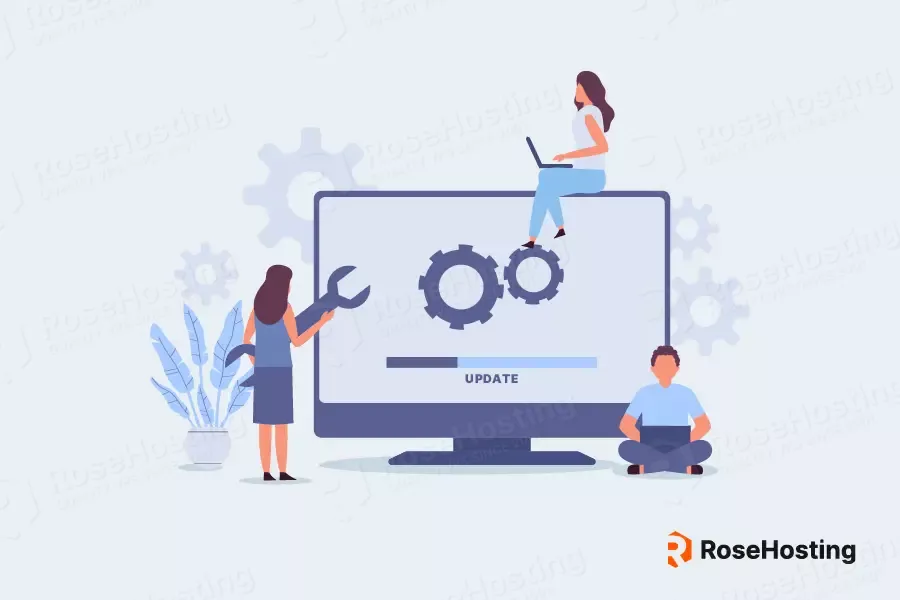
Just like a car or house, your website requires regular maintenance to keep everything running smoothly and efficiently. Website maintenance is the process of regularly checking for issues, fixing errors, and updating content.
This ensures that a website remains up-to-date, secure and relevant to the needs of your visitors. It’s an essential aspect of managing a website that many businesses and individuals overlook or underestimate. Only to regret it later when problems arise.
Even in cases where your website may rank highly in search engines, convert exceptionally well, and has had stable uptime for years, without proper maintenance and updates, you’re opening the door for your competitors to slowly but surely overtake you at best and for a malicious attack at worst. A poorly maintained site can lead to losing credibility and dissatisfied visitors. Worse still are security breaches, which can lead to catastrophic consequences for any business website.
This comprehensive guide will:
- Discuss the importance of regular site maintenance
- Provide an all-in-one fully-managed hosting solution
- Outline a website maintenance checklist
- Explore common website maintenance costs
- Offer tips for efficient website maintenance
- Examine the impact of website maintenance on your online presence
So let’s dive in and explore the world of website maintenance.
Table of Contents
Why Regular Website Maintenance Matters
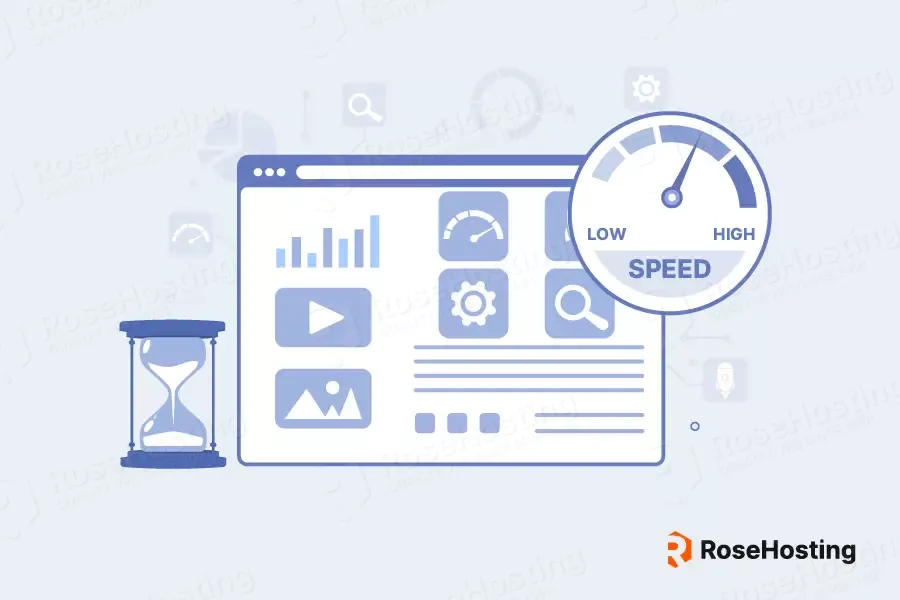
Regular site maintenance is crucial for several reasons. First and foremost, it helps to improve website performance and user experience. A well-maintained website loads quicker functions more smoothly, and is less likely to encounter errors or crashes.
Google and similar search engines have also used Page Speed as a ranking factor since 2010. This makes your page load times crucial for SEO. Perhaps even more importantly, multiple studies found that faster load times are directly linked to retaining visitors and increasing your on-site conversion rates. This means that not only are you driving more visitors to your website, but you’re converting more of them into customers.
Secondly, regular site maintenance helps to protect your website from security threats. Cybercriminals are constantly looking for vulnerabilities in websites for opportunities. Outdated software or plugins can allow hackers to infiltrate your site easily.
By staying on top of updates and security patches, you can significantly reduce the risks associated with these threats, and more often than not, it doesn’t require too much work or effort.
Finally, by consistently updating your website and addressing any issues that arise, you can improve your chances of ranking higher for current trends within your industry. This simultaneously increases your visibility and establishes your brand as a market leader in the minds of both visitors and search engines alike.
The all-in-one, fully-managed hosting solution
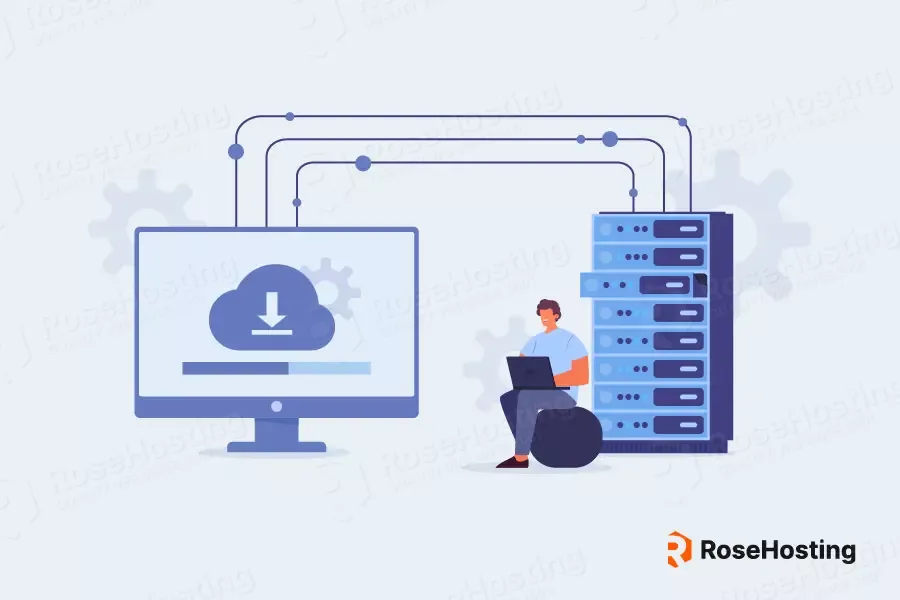
Finding the time and resources to handle website maintenance can be a challenge. One which an all-in-one, fully-managed hosting provider can easily help alleviate. Managed hosting takes the hassle out of website maintenance by offering a comprehensive range of services, including:
- Automated security monitoring and protection against threats, such as malware and hackers
- Regular updates for your website’s software, plugins, and themes to patch security loopholes
- Daily or weekly backups to ensure that your data is safe and secure
- Performance optimization and tweaks to keep your site running quickly and efficiently
- 24/7 support from a team of experts who can assist with any issues that arise
- Hand-holding assistance for any future updates or additional installations on your server
With a fully-managed hosting solution, you can ensure that your website is always up-to-date, secure, and performing at its best without having to worry about the nitty-gritty details of website maintenance. If, for some reason, you’d rather go the DIY route, you had better prepare to set aside time regularly to run through all the checklist items yourself or employ an IT team that will handle this stress for you.
Website maintenance checklist
We’ve compiled a comprehensive website maintenance checklist to help you stay organized and on top of your website maintenance tasks. This checklist is divided into annual, quarterly, and monthly tasks, along with automated monitoring for tasks that should be active 24/7.
Annual website maintenance checklist
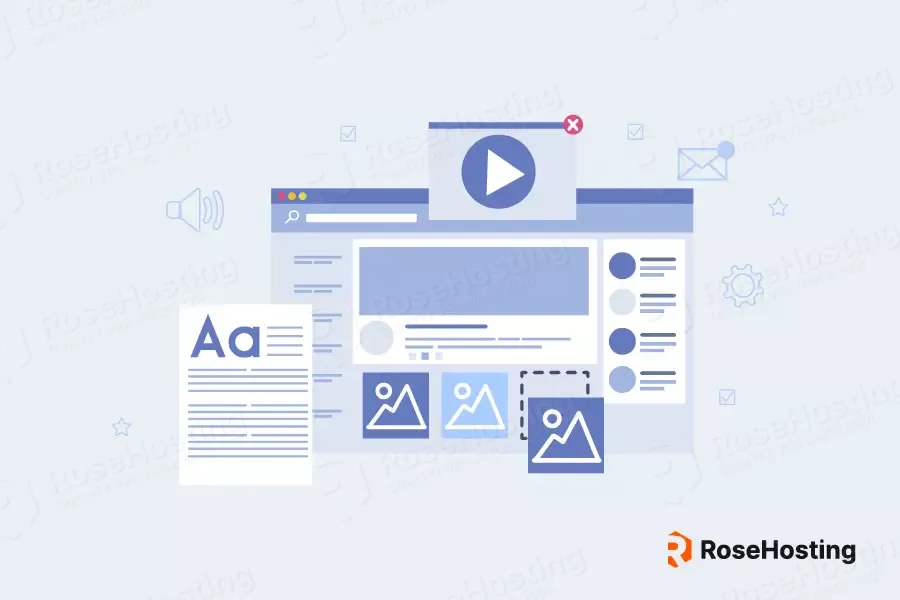
- Evaluate your hosting plan and consider upgrading or even moving when necessary. Upgrading to a more powerful plan is crucial for accommodating growth and increased traffic. As your website expands, it may require more resources and better performance capabilities to handle the growing demands, particularly for peak day traffic, like the December holiday time for e-commerce sites. Make sure to review your plan before any annual or bi-annual renewal periods. Unfortunately, most of the hosting industry offers unrealistic discounts when you register, only to increase the price massively at renewal. There are however unicorn companies like RoseHosting, and these truly are the Saints of Hosting in that you won’t experience price changes on renewal and will always have full price transparency so that you can rest at ease and ignore this point entirely.
- Renew your domain hosting. This is fairly straightforward and can often be set to auto-renewal to save you the hassle. Ensure to renew your domains before they expire because if you accidentally let them lapse, they are free for anyone to take, including your competitors, who can not only hold your old domain hostage but redirect any traffic and links you’ve collected to their site.
- Renew your SSL certificate. Another simple but easy-to-forget maintenance checklist item is to ensure you’ve renewed your SSL certificate. As with your domain, this can be automated, though it’s nowhere near as serious if you forget and accidentally let it lapse. It can harm your SEO if search engines scan and index your site during this process, but this will quickly recover if you reactivate it promptly. The bigger issue is that it can tarnish your brand with your website visitors, who will get the idea that your site may have been hacked or is otherwise illegitimate. A valid SSL certificate signals to your visitors that your website is secure and their data is protected, further strengthening your credibility and encouraging user engagement.
- Update all dates across your site. In addition to the footer copyright dates, updating your site content to reflect the current year is just smart SEO practice. ‘The Essential Website Maintenance Checklist For 2026’ should become ‘The Essential Website Maintenance Checklist For 2026’ in January 2026. Any instance where you mention that you’ve been in business for 22 years should reflect that it’s 23 years. This is particularly big for round dates such as ten years, quarter-century, or 30 years.
- Consider updating your website’s design to keep it fresh and visually appealing. This is something that doesn’t need to be done every year or even every other year, though it is good practice to review where you stand and how many of your key competitors have caught up or overtaken you in this regard. Updating your website’s design maintains a fresh, visually appealing online presence. Moreover, a modern, user-friendly layout with intuitive navigation can significantly enhance user experience, encourage return visits, and boost your website’s overall success. By periodically evaluating and adjusting your site’s aesthetics, you can stay ahead of design trends, keep your brand identity consistent, and ensure that your site remains accessible and appealing.
- Review your auxiliary pages and perform a content audit. Certain pages on your site won’t change that often, and this can particularly be true for your homepage, contact, about us and any other pages in the same vein. As they are considered core pages for your audience, it is still a good idea to review these at least once a year in case you’ve had some major changes which were missed at the time and haven’t been updated on your site.
Quarterly website maintenance checklist
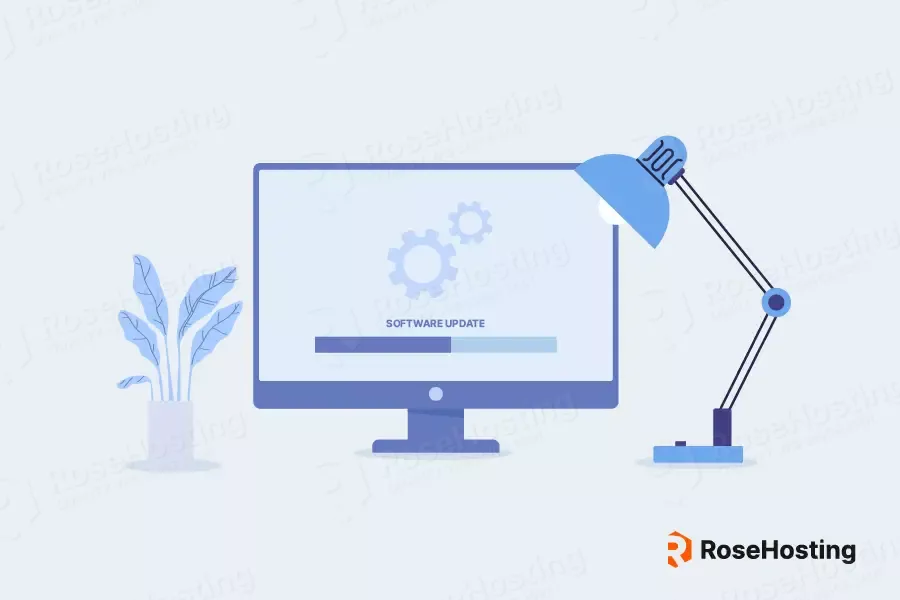
- Update all plugins, themes, and software to the latest versions to ensure optimal performance and security. A simple fix ensures you benefit from the latest features and improvements and safeguard your site against potential vulnerabilities and threats. In certain instances, updating can even improve your site’s speed, reliability, and user experience.
- On the other side of the same coin, remove unused plugins and themes. A necessity or a nicety. One-click plugins have made website management much more streamlined and functional. However, it is essential to remember that each additional plugin and theme carries a risk of potential security loopholes. The wisest course of action is removing outdated elements you no longer need, particularly if the original developers no longer support those plugins or themes.
- Test your website’s functionality, including menus, forms, live chat, social media links, checkout features, and any other interactive elements, to ensure that everything is working as it should. You could also do this task more frequently in sections if you have a very large site.
- Review your website’s analytics to make necessary adjustments to your SEO strategy, content, or design based on the data. Quarterly analytics are not as drawn out as annual reviews, where a number of big changes can occur. This makes it difficult to tell what strategies worked and which didn’t. Alternatively, monthly analytics are often inaccurate due to seasonality, weekdays, public holidays and events in any particular month. A 23-workday January will naturally compare favorably to a 20-workday February with several public holidays. This example shows how monthly analytics can skew data leading to misinformed decisions. Particularly if Google algorithm updates, big marketing events, website downtime, or annual seasonal trends kick in. Quarterly analytics iron out these inconsistencies and are easily comparable year-on-year, making it easier to implement the right strategy.
- Update your passwords enhancing the security of your accounts. Regular password changes make it more difficult for bad actors to access your data, reducing the risk of unauthorized access. A security breach of this nature can have catastrophic implications for your brand and business, and regular security maintenance cannot be understated.
Monthly website maintenance checklist
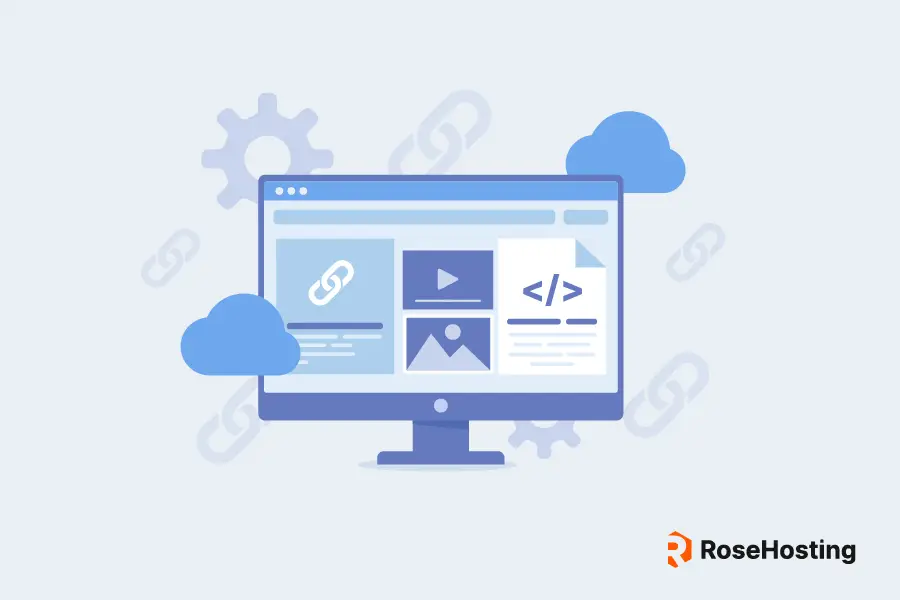
- Check for and fix all broken links you find. This should be done at least once a month. Not only do broken links negatively impact search engine rankings, but they make for a horrible website user experience. A single broken link can leave your visitors thinking your website is sloppy and tarnish your reputation and brand. This is especially true if that very same user was on the cusp of becoming a customer only to run into a 404 page not found message. Regularly checking and fixing these links ensures smooth navigation for your users and a more professional appearance.
- Regularly evaluate your website’s load time. Swift-loading pages enhance user experience and boost search engine rankings. Optimize performance through techniques like image compression, browser caching, and code minification if needed.
- One of the more crucial yet often ignored regular maintenance tasks you need to do is to test your checkout process. This is such a crucial section of your website and, in many cases, the sole reason your site exists in the first place. If there are broken elements or complications with the checkout process, it can significantly drop conversion rates from the people most likely to convert. You get someone to the finish line, only for them to give up the race at the very end. Try to test conversions yourself from various devices, browsers, and user scenarios to simulate the customer journey appropriately. Heatmaps, click maps and funnel reports are essential for noticing where your users are falling off. This will ultimately boost your revenue and reputation.
- Optimize your SEO. Now we get it. SEO is an ongoing process. You’ll most likely be doing it daily and for years. At least once a month, however, you should review traffic sources and position tracking and manually glean at search engines. This will help you spot issues you may have otherwise missed that compound over time, making it more difficult to bounce back.
- Create new and update old content. This will most likely be done hourly, daily, weekly or monthly, depending on the size of your site. Monthly content updates should be the bare minimum, even for the smallest sites. Remember that this doesn’t mean always creating new content but updating existing content too. This can include product pages, blog posts, images, and videos, to ensure everything is current and relevant. By improving existing content, you keep your website fresh, meaning that search engines will be more inclined to crawl and index your site. More importantly, this practice enables you to showcase your expertise in your industry, demonstrate your commitment to staying current, and retain your audience’s interest.
Weekly website maintenance checklist
- One of the primary tasks is a comprehensive backup of your website‘s files and database regularly. This includes safeguarding all essential data, such as images, content and settings. Save the backup in a secure location, like an external hard drive or a cloud-based VPS. A fully-managed VPS is ideal as you will not only have everything automatically backed up for you, but depending on your plan, these backups could happen weekly, twice a week or even daily.
- Review key website metrics such as analytics, ad performance and search console. While you don’t have to write concise reports, at the very least, you should be on top of changes happening to your site to avoid nasty surprises. This should be the most basic of website maintenance, where you only look for irregular changes that could mean a key page is broken, you lost a powerful backlink or the latest Google algorithm impacted your site.
Automated monitoring
- Monitoring uptime in real-time is crucial to maintaining a website or network’s performance, reliability, and user satisfaction. By closely monitoring system availability, potential issues can be identified and resolved promptly, minimizing disruptions and downtime for your users. Ideally, this is one of the tasks that should be automated to send you or your managed provider immediate notifications in case something goes wrong so that it can immediately be addressed any time of day or night.
- Proactive Protection utilizes efficient malware scanning to safeguard your digital assets. It allows you to avoid potential threats, ensuring system stability and security. Using advanced technology to detect vulnerabilities provides a robust defense against cyber-attacks. The best fully managed hosting providers will also offer protection and proactive fixes if anything goes wrong, removing the need to lift a finger yourself. In optimal circumstances, you may not even know that anything happened.
Common website maintenance costs
Website maintenance costs can vary depending on the size and complexity of your website and the level of support and services you require. Some common website maintenance costs include:
- Hosting fees: Depending on your hosting plan, you can expect to pay anywhere from a few dollars to several hundred dollars per month for hosting services.
- Domain registration and SSL certificate fees typically cost between $10 and $50 per year, depending on the provider and the level of security you choose.
- Software and plugin premium licenses may require annual or monthly fees ranging from a few to several hundred dollars.
- Professional support and maintenance services: If you choose to hire a professional to handle your website maintenance, you can expect to pay anywhere from $50 to $200 per hour, depending on the level of expertise and the services provided. This cost may be avoided entirely by going with a fully-managed hosting provider.
Tips for efficient website maintenance
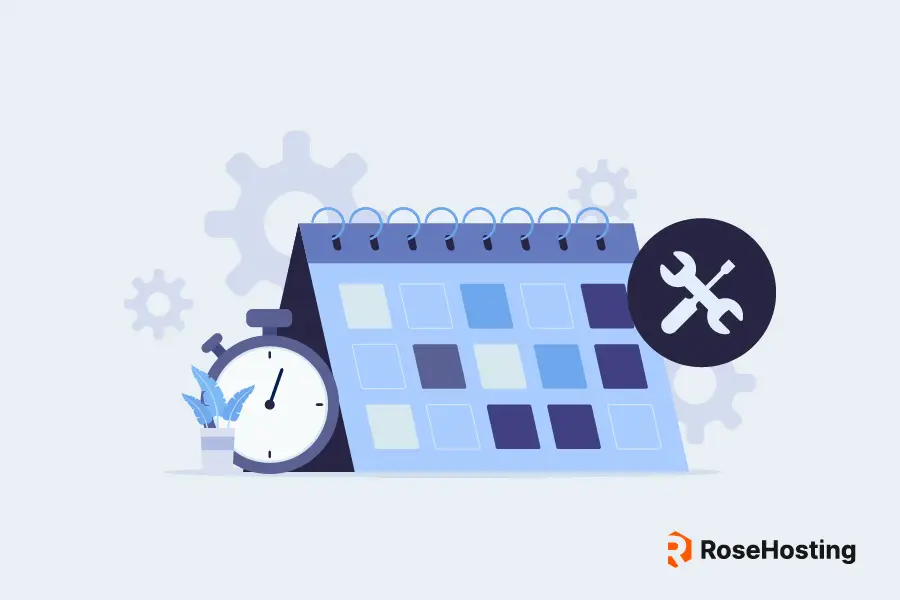
To make the most of your website maintenance efforts, consider the following tips:
- Create a website maintenance plan to stay on top of all necessary tasks.
- Focus on critical tasks first, such as security updates and backups.
- Schedule regular maintenance sessions and stick to the schedule as closely as possible.
- Automate where possible using tools and plugins or fully-managed support.
- Keep up-to-date on the latest best practices and security threats.
Bringing it all together
Remember that website maintenance is an ongoing process. Regular website maintenance is essential for maintaining a strong online presence and ensuring the ongoing success of your website. By following the website maintenance checklist outlined in this guide and implementing a comprehensive website maintenance plan, you can keep your site running smoothly, securely, and effectively. This can be mostly bypassed by choosing a managed hosting provider instead of going the DIY route.